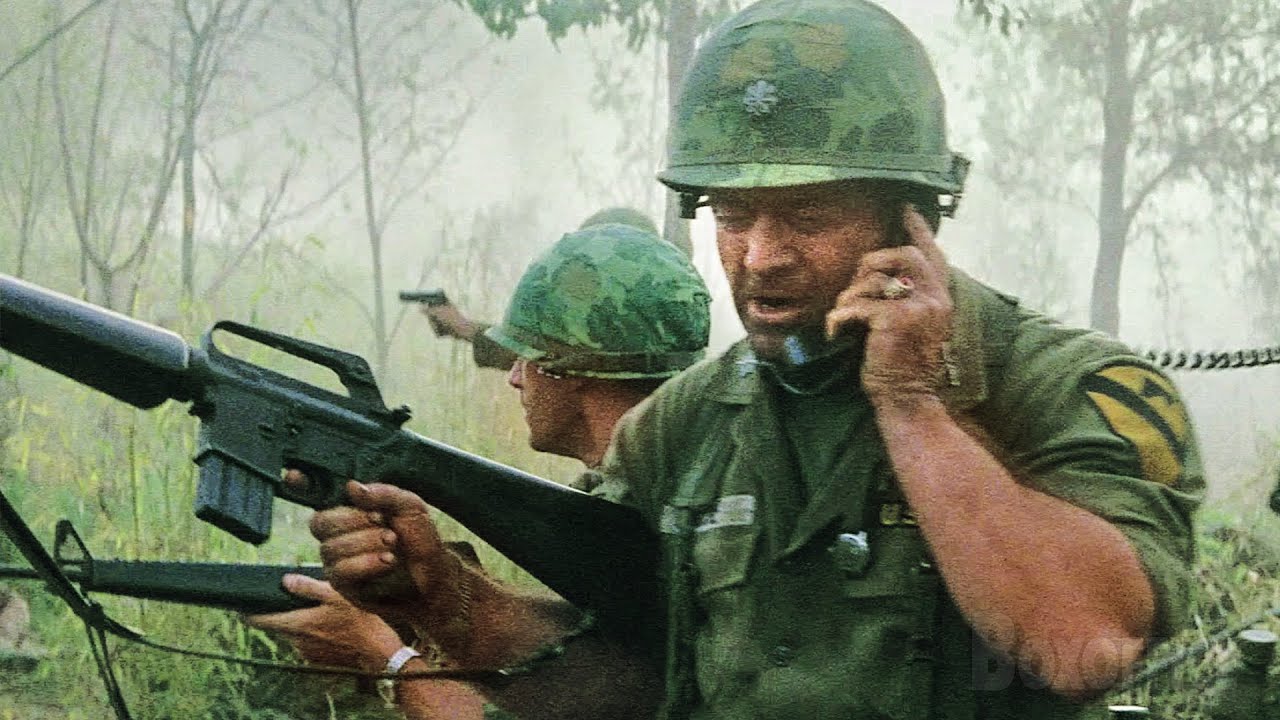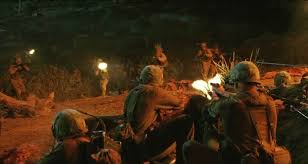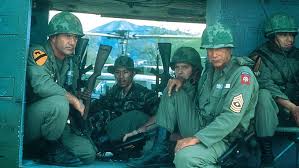🎬 We Were Soldiers (2002)

We Were Soldiers (2002) Review
Introduction
Directed by Randall Wallace and based on the non-fiction book We Were Soldiers Once… and Young by Lt. Gen. Harold G. Moore and Joseph L. Galloway, We Were Soldiers (2002) is a gripping and visceral portrayal of the Battle of Ia Drang during the Vietnam War. Starring Mel Gibson as Lt. Col. Hal Moore and Madeleine Stowe as his wife Julie, the film captures the courage, sacrifice, and humanity of soldiers and their families. With its focus on realism and emotional depth, We Were Soldiers stands out as a powerful war drama.
Plot Overview
The film chronicles the first major engagement between American and North Vietnamese forces during the Vietnam War. Lt. Col. Hal Moore (Mel Gibson) leads the 1st Battalion, 7th Cavalry Regiment into the Ia Drang Valley, where they face an overwhelming enemy force. Alongside journalist Joe Galloway (Barry Pepper), who documents the harrowing events, Moore and his men endure intense combat and unimaginable losses.
Meanwhile, on the home front, Julie Moore (Madeleine Stowe) provides support to the soldiers’ families, delivering telegrams that notify them of their loved ones’ deaths. This dual narrative highlights the shared burden of war for those on the battlefield and those waiting anxiously at home.
Strengths
1. Authentic Battle Sequences
The film’s combat scenes are unflinchingly realistic, capturing the chaos and brutality of war. Randall Wallace’s direction immerses viewers in the battlefield, with dynamic camerawork and intense sound design that emphasize the relentless nature of the fighting.
2. Mel Gibson’s Commanding Performance
Mel Gibson delivers a heartfelt and resolute performance as Hal Moore, portraying the character’s tactical brilliance, compassion for his men, and unwavering sense of duty. His speeches and moments of quiet reflection add emotional depth to the film.
3. Humanizing the Enemy
Unlike many war films, We Were Soldiers takes time to humanize the North Vietnamese soldiers, presenting them as individuals with their own motivations and sacrifices. This balanced perspective adds layers of complexity to the narrative.
4. Focus on Family and Sacrifice
The film’s portrayal of the home front, particularly through Julie Moore’s perspective, provides a poignant counterbalance to the battlefield action. The emotional toll on families underscores the far-reaching impact of war.
5. Barry Pepper’s Supporting Role
As Joe Galloway, Barry Pepper brings authenticity and vulnerability to his portrayal of a journalist thrown into the horrors of war. His transformation from observer to participant adds a compelling layer to the story.
Weaknesses
1. Conventional Narrative
While the film’s execution is strong, its narrative structure follows familiar war movie tropes. The emphasis on heroism and sacrifice, though poignant, may feel predictable to seasoned viewers of the genre.
2. Underdeveloped Supporting Characters
While the film focuses on Hal Moore and Joe Galloway, many of the soldiers under Moore’s command lack individual characterization. This limits the emotional impact of their fates during the battle.
3. Heavy-Handed Emotional Moments
Some scenes, particularly those involving families receiving death notifications, are overly dramatized, which may come across as manipulative to some viewers.
Themes and Symbolism
1. Brotherhood and Leadership
The film emphasizes the bond between soldiers and the responsibilities of leadership. Moore’s mantra, “We leave no one behind,” encapsulates his commitment to his men.
2. The Duality of War
By juxtaposing the battlefield with the home front, the film explores the dual experiences of war: the physical and psychological toll on soldiers and the emotional burden borne by their families.
3. Sacrifice and Humanity
The film portrays war as a profound test of human endurance, highlighting acts of bravery, sacrifice, and the shared humanity of opposing forces.
Visual and Technical Aspects
1. Cinematography
Dean Semler’s cinematography captures the intensity of combat and the contrasting tranquility of the home front. The use of natural lighting and handheld cameras enhances the realism.
2. Sound Design
The film’s sound design immerses viewers in the chaos of battle, with realistic gunfire, explosions, and ambient noise creating a visceral experience.
3. Musical Score
Nick Glennie-Smith’s score blends somber and triumphant tones, complementing the film’s emotional highs and lows.
Final Verdict
We Were Soldiers (2002) is a powerful and emotionally resonant war film that pays tribute to the bravery and sacrifices of soldiers and their families. While its conventional narrative and underdeveloped supporting characters may limit its impact for some viewers, the film’s authenticity, compelling performances, and balanced perspective make it a standout entry in the genre. For those seeking a heartfelt and harrowing portrayal of the Vietnam War, We Were Soldiers is a must-watch.
Rating: 8.5/10